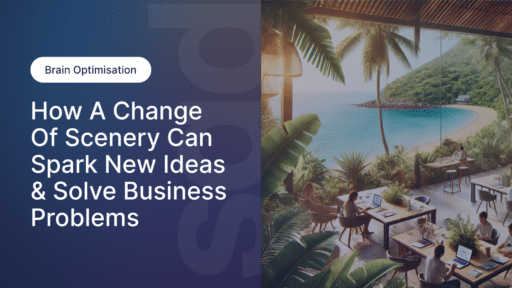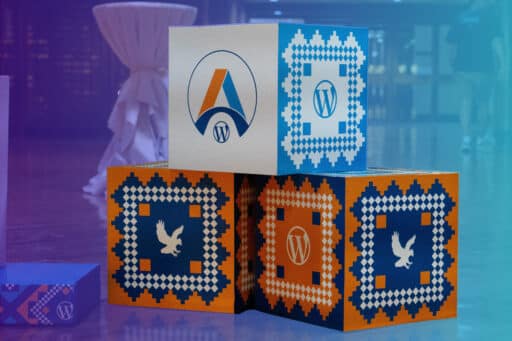Based on our experience designing websites for hospitality venues such as The Botanist, The Watershed Hotel and SoCal Sydney, we’ve learned that many hospitality marketing managers want to blog, but don’t see it as time-efficient or cost-effective. That’s why we compiled the Hospitality Marketing Manager’s Guide to Blogging, which outlines a 10-point content strategy showing you how to maintain a profitable, lead-generating blog on your hospitality website, even if you only have about 10 minutes of spare time a week.
Tip #7 – Generate Leads
So far we’ve been discussing how to engineer the title and content of your blog to retain existing customers and attract new ones. But what about collecting contact information from your readers in order to target them later on?
It’s not enough to just present your blog to the world in the hope of converting readers into customers. True, high-quality content will achieve conversions, but you also need to ensure that the blog is actively generating leads for you to grow your email database. If you have a list of names and email addresses of people who have shown even the remotest interest in your hospitality venue, you can then send out eNewsletters and promotional offers to a defined target audience. You can communicate with these people on a first-name basis and endeavour to build the foundations of a relationship.
There are several tactics to collect names and email addresses from potential customers. Some websites flash a subscription form at you almost instantly. Since you’re usually not required to fill this out in order to view the site, it doesn’t make much sense for the business to use it so early in the visitor’s journey through the website. If they’re a first-time visitor, why would they be willing to share their information already?
Another option is entice visitors with a snippet of the article and then require them to sign up to read the rest. While this can work, the rest of the article had better be good (i.e. you better fulfil the promise of the snippet) or the visitor will regret handing over their information and leave the site with an unfavourable impression of your venue.
Alternately, you can take a subtler approach by letting visitors read the entire blog post in peace, but linking specific words or phrases within the post to other pages where they must enter their contact information in order to view the new content. Similar to the previous tactic, here you’re allowing the reader to have more control over the experience. They receive what they came for (i.e. the information in the blog post), so they won’t leave empty-handed, but if they want more they’ll have to exchange their contact details.
You can place lead generation links anywhere in the post and they can take visitors to a variety of content, for instance a blog post on a related topic, a deal on room rates, a coupon for meals, tickets to an event—in fact, anything that will solve a problem or fulfil a desire. You may want to experiment with different links to see which generates more leads.
If you wish, you can combine the in-post links with another section somewhere on your site (perhaps in the sidebar or in an upper or lower corner of the page) where visitors can voluntarily enter their name and email to subscribe to your blog, eNewsletter or to receive promotional offers.
When creating content for lead generation, think of it as dangling a carrot in front of your visitors. If you make that carrot irresistible, visitors won’t think twice about giving you their contact information.
Thank you for reading the seventh installment of our series, the Hospitality Marketing Manager’s Guide to Blogging. You can download the full series as a zip file FOR FREE by clicking the link below. The zip file contains the Guide in PDF format for easy reading, as well as a Hospitality Blog Template in both PDF and Word format to help you get started.
Also check out:
- Tip #1 – Stay Close to Home
- Tip #2 – Be Consistent
- Tip #3 – Join the Conversation
- Tip #4 – Get Their Attention
- Tip #5 – Focus on the Customer
- Tip #6 – Time Is Money
- Tip #7 – Generate Leads
- Tip #8 – Call Them to Action
- Tip #9 – Think Outside the Box
- Tip #10 Promote, Promote, Promote!
Image © racorn
Author

James Fulton
Since founding the company in 2012, James has been the driving force behind SGD's success. As a visionary leader, he guides the SGD team, encouraging them to continually excel in digital design. James inspires a culture of growth, challenging each team member to surpass their own limits and set new standards in the field. This commitment to excellence not only propels personal development but also ensures SGD consistently delivers exceptional results for its clients.
Unlock Weekly Insights To Improve Your Website
Want to improve your website and digital marketing? Sign up to Marketing Monday for practical, up-to-date strategies on SEO, Google Ads, and website performance—delivered weekly.
No fluff, just results-driven advice. Unsubscribe anytime.
Next Article
WordPress vs Wix: What's Right for Your Business?
January 23, 2015Start a Project









